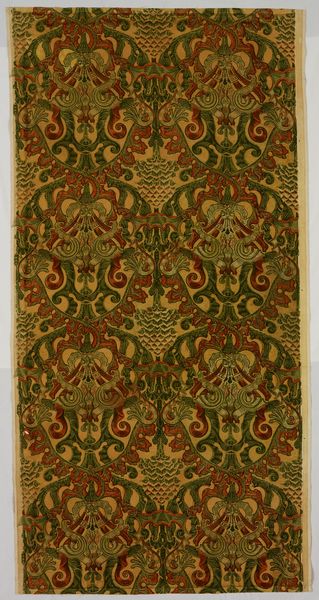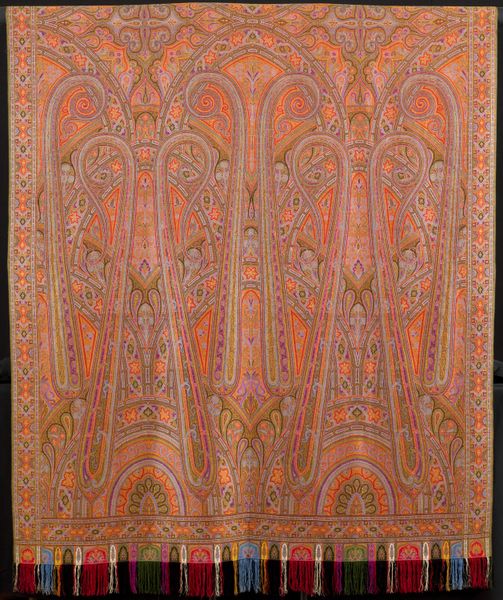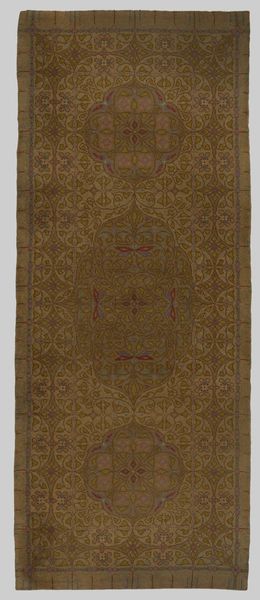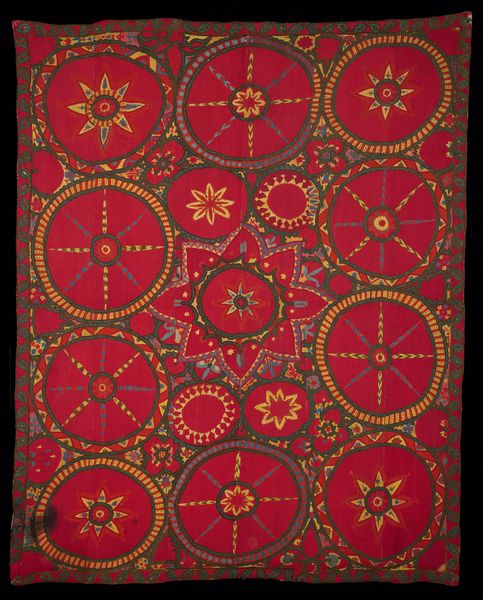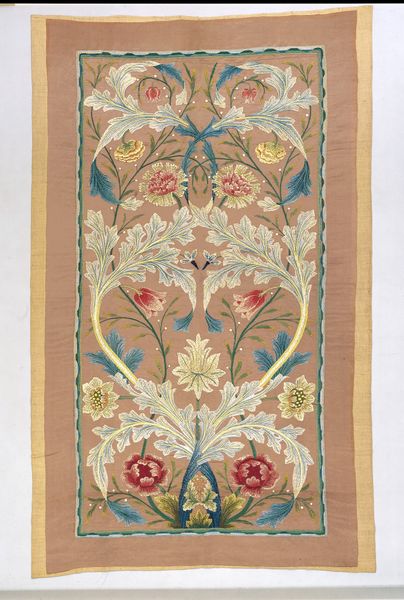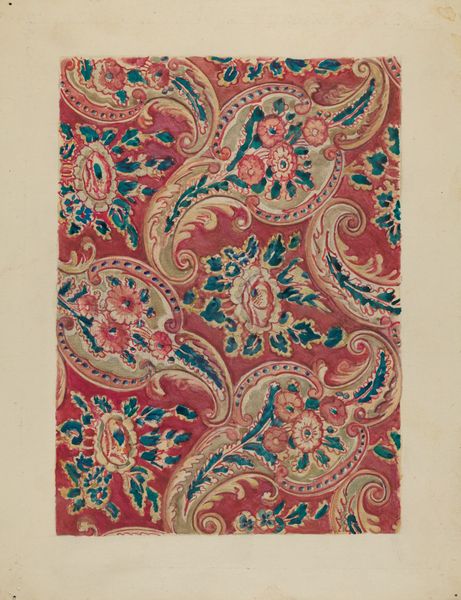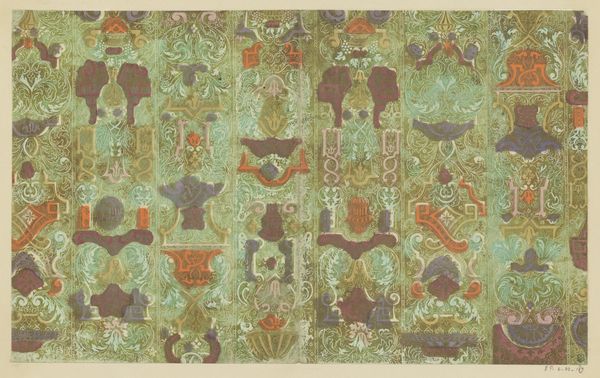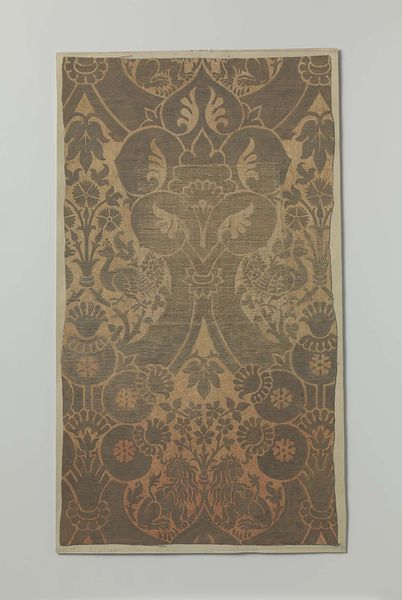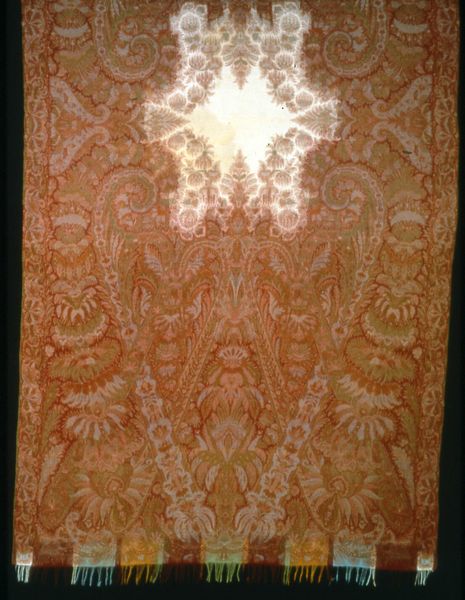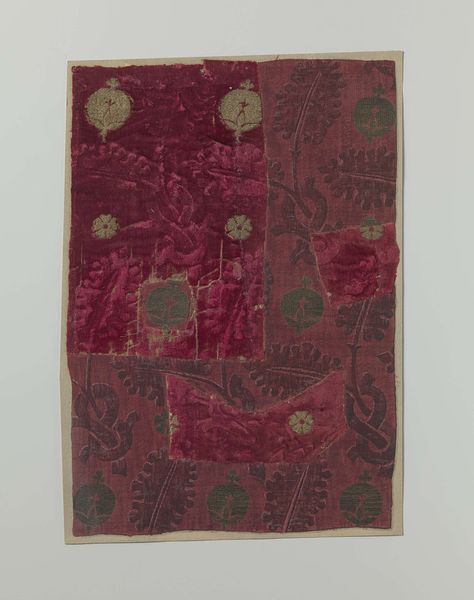
Dimensions: 107-3/4 x 67-3/16 in. (273.7 x 170.7 cm)
Copyright: Public Domain
Curator: Before us hangs "Peacock and Dragon," a wool textile created around 1878. It’s currently part of the collection here at the Minneapolis Institute of Art. What strikes you first about it? Editor: Immediately, it’s the sheer density of the pattern. It feels incredibly rich, almost overwhelming – a bit like stepping into a meticulously overgrown garden. Curator: Exactly. It’s quintessential William Morris, leader of the Arts and Crafts movement in England. We must see beyond a simply pleasing wallpaper, examining the ethos against industrialized production, reflecting on the agency involved. Editor: The peacock and dragon themselves… those aren't casually chosen motifs, are they? Birds are common symbol in a wide range of faiths. And, the dragon traditionally signifies power and authority. Curator: Absolutely. Morris was deeply invested in symbolism. The peacock, often associated with beauty, pride, and even immortality, and juxtaposed against the dragon can represent both internal conflict and hierarchical struggle between good and evil that echoes through Western art and cultural visual representations. Editor: And, thinking of those intertwined meanings—it becomes a wider debate over beauty as protest and resistance. His art spoke to societal inequalities brought to light with industrialized England in which workers no longer found pride in the outcome of their toils. Curator: I see the tension you are referring to! Morris and his movement fought for the dignity of the worker by insisting that beautiful surroundings contribute to the soul of the working person. Beauty for all. Editor: I never cease to be astonished that we still grapple with the same challenges that sparked such works over a century ago. Thank you. Curator: The complexities behind art can open many needed conversations for ourselves today. I find myself contemplating just how many battles for dignity are left to win.
Comments
minneapolisinstituteofart almost 2 years ago
⋮
William Morris was already a highly successful designer and weaver of textiles when he began manufacturing heavier woven textiles in 1877. Using a wide loom brought from Lyon, France, he was able to produce patterns on a greater scale than before, and it also allowed for more subtle contrasts of color and texture within the weave. The "Peacock and Dragon" pattern was among the earliest produced for the larger loom. It exemplifies his love of intertwining natural forms of animals and plants, based on his own close observation of nature. Morris also drew upon his extensive knowledge of the oriental textiles in the South Kensington Museum, where he served as an advisor. Paired animals and birds originated in Persian art and were adapted in Ottoman and Italian silk weaving. Morris first used this pattern for the curtains in the drawing room of his London home, Kelmscott House, and later marketed it widely. This panel was produced especially for American clients, who were attracted to the stylized motifs and the muted colors obtained by using vegetable dyes.
Join the conversation
Join millions of artists and users on Artera today and experience the ultimate creative platform.

